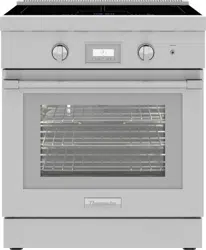Loading ...
Loading ...
Loading ...

Environmental protection and energy-saving en-us
11
Environmental protection and energy-saving
3 Environmental protection and
energy-saving
Environmental protection and energy-saving
3.1 Disposal of packaging
The packaging materials are environmentally compatible
and can be recycled.
▶ Sort the individual components by type and dispose of
them separately.
3.2 Saving energy when using the oven
If you follow these tips, your appliance consumes less
energy.
Only preheat the appliance if the recipe or the
recommended settings tell you to do so.
a
Not preheating the appliance can reduce the energy
used.
Use dark-colored, black-coated or enameled baking pans.
a
These types of baking pans absorb the heat particularly
well.
Open the appliance door as little as possible during
operation.
a
This will maintain the temperature in the oven cavity
and eliminate the need for the appliance to reheat.
When baking multiple dishes, do so in succession or at
the same time.
a
The oven cavity is heated after baking the first dish.
This reduces the baking time for the second dish.
If the cooking time is relatively long, you can switch the
appliance off 10minutes before the cooking time ends.
a
There will be enough residual heat to finish cooking the
dish.
Remove any accessories that are not being used from the
oven cavity.
a
An extra pan without food affects the browning and
cooking.
Allow frozen food to defrost before cooking.
a
This will save the energy that would otherwise be
required to defrost it.
3.3 Saving energy when using the cooktop
If you follow these tips, your appliance consumes less
energy.
Select cookware with a base diameter that matches the
cooking zone. Center the cookware on the cooking zone.
Tip:Cookware manufacturers usually state the top
diameter of the cookware. The diameter of the cookware
base is usually smaller.
a
The energy is targeted at the cookware.
If you use cookware that is too small, energy is wasted.
If the cookware is too large, much energy is used to
heat up the cookware.
Close cookware with a fitting lid.
a
Cooking without a lid consumes more energy.
Only lift the lid when necessary.
a
If you lift the lid, a lot of energy can escape.
Use a glass lid.
a
If you use a glass lid, you can look inside the cookware
without lifting the lid.
Use cookware with a solid flat bottom.
a
Curved cookware bases increase energy consumption.
Use a cookware size that matches the amount of food you
want to cook.
a
Cookware with little content consumes a lot of energy.
Cook with a small amount of water.
a
More water requires more energy to heat it up.
Select a lower power level as soon as possible. Select a
suitable power level to continue cooking.
a
For ongoing cooking a lower power level is sufficient.
Loading ...
Loading ...
Loading ...
